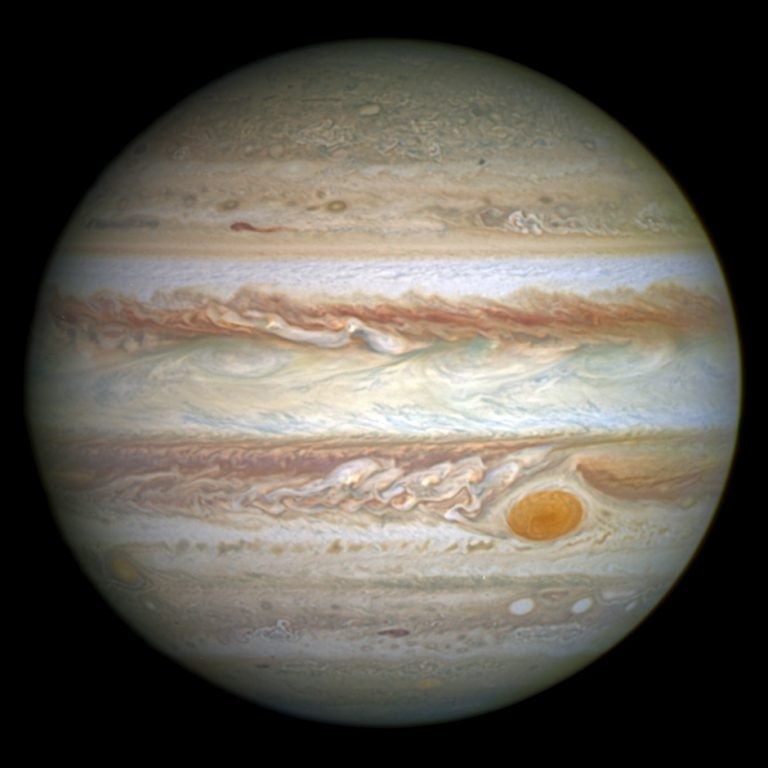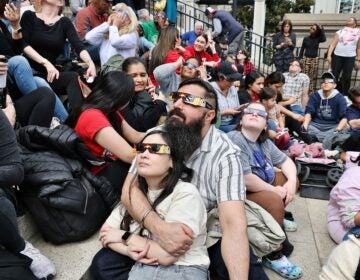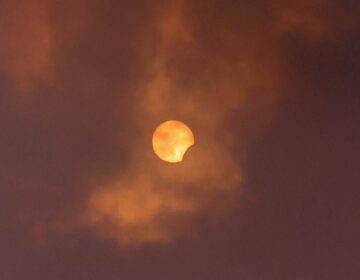Jupiter Ch-Ch-Changes
Listen 3:56
This full-disc image of Jupiter was taken on 21 April 2014 with Hubble's Wide Field Camera 3 (WFC3).
Jupiter has seen quite a dramatic change since formation 4.5 billion years ago. Now the largest planet in the solar system, with a mass greater than that of all the other planets combined, computer models suggest Jupiter started out four times farther away than it is today and much smaller, more Earth-like in size, then grew in size and moved to its current position closer to the sun.
This new understanding was arrived at while researchers tried to figure our why Jupiter’s forward batch of asteroid ‘kling-ons’ (the Trojan asteroids) is so much larger than its aft batch of ‘kling-ons’.
Brilliant Jupiter is available to be seen in the pre-dawn sky around 5:00 a.m., along with Saturn and the moon. Venus is visable for just a few more days as it’s now dipping into the pre-dawn glare of the sun. Mars still lords it over the evening sky but it too is slipping in dominance. Leo the Lion takes over as the main constellation of the spring sky.
WHYY is your source for fact-based, in-depth journalism and information. As a nonprofit organization, we rely on financial support from readers like you. Please give today.




